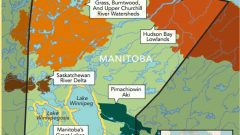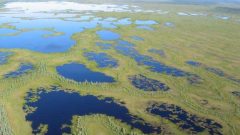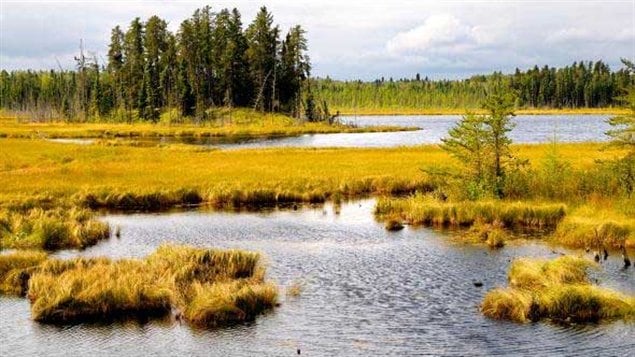Environmental groups have just released a report outlining the environmental importance of preserving the boreal forest in Canada’s central-west province of Manitoba.
Jeff Wells is the Science and Policy Director for the Boreal Songbird Initiative, which along with Ducks Unlimited Canada, prepared the report called, Manitoba’s Blue Mosaic-
ListenManitoba is generally thought of as one of Canada’s three western prairie provinces.

In actual fact that only relates to the southern portion of the province while about three-quarters of the province is boreal forest, and about 80 percent of that region remains relatively undeveloped and in its natural state.
With a total area some 100,000 square kilometers larger than France, Europe’s biggest country, Manitoba represents a vast haven of as yet unspoiled biodiversity.
It is also unique in that it encompasses at least four distinct ecozones within its boreal forest:Boreal Plains, Boreal Shield, Hudson Plains, and Taiga Shield

Manitoba’s vast boreal region encompasses several important ecosystems within four distinct ecozones ((Manitoba’s Blue Mosaic report) CLICK to enlarge
Jeff Wells points out that as climate change pushes more birds and animals north, the natural wetlands and forests will help to preserve species.
The report notes that the boreal forest region store twice as much carbon per square kilometre as tropical forests, while noting that wetlands and peat are highly sensitive to disturbance and when drained can release carbon stored for thousands of years.

The province’s thousands of sq,km of boreal peatland sequesters enormous quantities of carbon while also filtering the earth’s water and providing refuge for wildlife (Ducks Unlimited Canada) CLICK to enlarge
It has long been known that wetlands also act as a critical “sponge” to mitigate climate changes by absorbing and holding water during flooding, and then slowly releasing it during droughts.
Wells says the report is designed to enlighten both Manitobans and the world to the importance of preserving this vast region.
As up to 80 percent of the province’s boreal region remains untouched so far, it is a far easier task to develop policies to protect it and also ensure development is carefully planned to take place slowly and with forethought as to the effects it may have on the surrounding ecosystems.







For reasons beyond our control, and for an undetermined period of time, our comment section is now closed. However, our social networks remain open to your contributions.